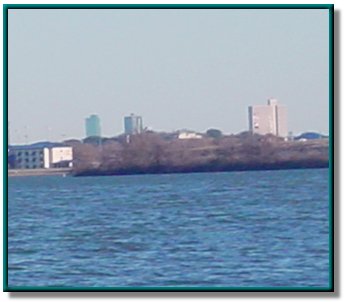Dallas and Tarrant Counties: Legacy Pollutants

Photograph courtesy of the Fort Worth Water Department
Counties: Dallas, Tarrant
Parameters: chlordane, DDT, DDD, DDE, dieldrin, heptachlor epoxide, and polychlorinated biphenyls (PCBs) in fish tissue
Basin: Trinity River
Segments: 0805, 0841, 0841A
On this page:
- Background and Goal
- Description of Watershed
- Status
- Approved I-Plan
- Adopted TMDLs
- Get Involved
- Contact the TMDL Program
Background and Goal
As early as 1990, seven legacy pollutants have been detected in fish tissues in portions of the Upper Trinity River, the Lower West Fork Trinity River, and Mountain Creek Lake, all in the Dallas area. Legacy pollutants are chemicals whose use has been banned or severely restricted, but which still remain in the environment. The pollutants involved include chlordane, DDT, DDD, DDE, dieldrin, heptachlor epoxide, and PCBs, most of which were once used as insecticides.
TCEQ determines attainment of the fish consumption use based on risk analyses and consumption advisories conducted and published by the Texas Department of State Health Services (DSHS). The goal of this TMDL project is to reduce concentrations of fish-tissue contaminants to levels that are an acceptable risk to consumers.
Description of Watershed
The project area includes three water bodies across Dallas and Tarrant Counties:
- The Upper Trinity River (Segment 0805) extends from the confluence of the Elm Fork of the Trinity River in west-central Dallas County, downstream to The Upper Trinity River (Segment 0805) extends from the confluence of the Elm the Cedar Creek Reservoir discharge canal in Henderson/Navarro County.
- The Lower West Fork Trinity River (Segment 0841) extends from the confluence of Village Creek in east-central Tarrant County, downstream to the confluence of the Elm Fork of the Trinity River in west-central Dallas County.
- Mountain Creek Lake (Segment 0841A) is a tributary of the Lower West Fork of the Trinity River. The lake has a current capacity of 20,200 acre-feet. Mountain Creek Lake drains a 46,130-acre watershed downstream.
Status
All the pollutants for which TMDLs were adopted, with the exception of PCBs, have been reduced to acceptable levels. Legacy insecticides are no longer considered a risk to consumers of fish from these areas.
In August 2019, DSHS collected fish tissue samples at various sites on the Upper Trinity River. DSHS completed their updated risk analysis in 2021. Based on that analysis, DSHS has continued their Advisory 43, which recommends that consumers not eat any fish taken from the Upper Trinity River due to high concentrations of dioxin and PCBs in the fish tissue of all species. The advisory area includes the Clear Fork of the Trinity River from the Benbrook Reservoir Dam, the West Fork of the Trinity River from the Lake Worth Dam, and the main stem of the Trinity River downstream to the U.S. Highway 287 Bridge.
The DSHS 2021 analysis did not include Mountain Creek Lake. Their Advisory 59, issued in 2017, remains in effect, recommending that consumers not eat fish from the lake because of high concentrations of dioxin and PCBs. See more information about DSHS fish consumption advisories and bans on their map-based advisory viewer or see the DSHS webpage about the types of fish consumption advisories and bans they issue.
Approved I-Plan
The Commission approved the I-Plan in August 2001.
- I-Plan for Dallas and Tarrant County Legacy Pollutant TMDLs
- Response to Public Comment on the Dallas and Tarrant County Implementation Plan
Adopted TMDLs
Given the fact that no additional pollutant loading can legally occur in these water bodies, the maximum permissible daily load allowable is, in effect, zero.
The Commission adopted these TMDLs on Dec. 20, 2000. EPA approved these TMDLs on June 27, 2001, at which time they became part of the state's Water Quality Management Plan.
-
Nine TMDLs for Legacy Pollutants in Streams and a Reservoir in Dallas and Tarrant Counties
Segments 0805, 0841, and 0841A
Get Involved
TCEQ communicates the progress of this project through the Trinity Basin Steering Committee created by the Texas Clean Rivers Program. This TMDL project was a collaborative effort involving TCEQ, the U.S. Geological Survey (USGS), the Texas Department of State Health Services (DSHS), the City of Fort Worth, and the Trinity River Authority (TRA).
Contact the TMDL Program
Please email tmdl@tceq.texas.gov and mention the Dallas and Tarrant Counties TMDL project in the subject line. Or call us at 512-239-6682.





 Back to top
Back to top